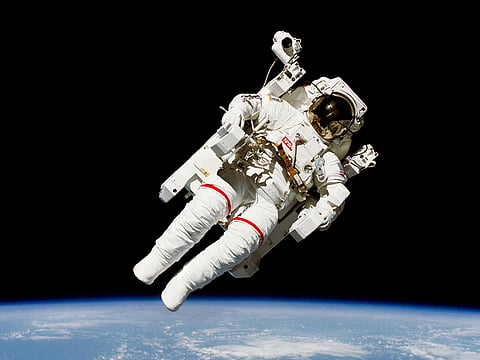Ever wonder what’s on the menu for astronauts?
Food often has to sit in storage for six months before it goes into space, so what works?

Washington, DC: Neil Armstrong may have taken that first small step for man onto the moon, but it was John Glenn who took the first slurp of applesauce for humankind.
Until he ate while orbiting Earth in 1962, scientists at Nasa weren’t sure humans could swallow and digest food while in space. Luckily, he chowed down in zero gravity with no trouble. Today’s astronauts sometimes spend months at a time living in the International Space Station (ISS), so they’d get pretty hungry without a few snacks!
Of course, while the human body is happy to take in a meal while hovering 400 kilometres above Earth, the process of cooking and eating food isn’t exactly the same as it is back home. That’s why Nasa scientists are still working hard to perfect astronaut menus. A healthy diet is even more crucial for space farers than it is here on the surface, because spending time in space makes your body start to lose bone and muscle mass. Nasa has to figure out how to send food up in a rocket, store it for as long as possible and make sure it delivers a perfect balance of nutrients — and it has to keep astronauts from getting bored, too!
Also Read: Nasa targets humans on Mars within 25 years
Also Read: 60 years of Nasa, as told by Rory Kennedy
“Imagine trying to eat the same food for every meal for six months. You may get tired of the food and eat less than you need to maintain weight, health and performance. That’s why we have to make sure there’s a large variety of healthy food available for the astronauts to make choices,” says F. Ryan Dowdy, ISS food system manager at Nasa’s Johnson Space Centre in Houston, Texas.
Astronauts have about 200 food items to pick from. According to Dowdy, a lot of the options are surprisingly similar to meals we eat on Earth.
Comfort food
“Whether it’s macaroni and cheese or chocolate pudding cake, it’s important for the astronauts when eating to be reminded of home,” he says. “Food can be an important psychological comfort in the stressful environment of space.”
It’s the preparation that’s unique: Food often has to sit in storage for six months before it even goes into space — and last for weeks or months at a time once it’s up there — so Nasa designs everything with a shelf life of at least two years. Macaroni and cheese is freeze-dried (meaning that most of the moisture is removed, which makes it safe to store at room temperature), and astronauts add hot water to it on the space station. Chocolate pudding cake is preserved similarly to canned food, but Nasa puts it in a flexible pouch so it takes up less space.
Some Earth foods are already perfectly fit for zero-gravity consumption. Tortillas, for example, are a great alternative to bread — they last a long time in storage, and they don’t form crumbs that float around and get caught in important parts of the ship. Astronauts can also request small quantities of fresh fruits and vegetables whenever Nasa sends supplies up, but for the most part, they’re eating various combinations of super-durable stored foods.
As Nasa looks to the future of space flight — with missions to Mars, and perhaps even farther — the agency has to design even more durable food. It takes about eight months to get to Mars, and astronauts will have to bring food for the journey home, too. Dowdy says Nasa is working to extend the shelf life of its foods to around five years, but experiments in space farming are also part of the plan.
Astronauts on the ISS are able to farm plants such as lettuce in small quantities, but Dowdy says it will take some time before this is a sustainable source of calories. He thinks 3-D printed treats may also be on the menu someday soon. One thing is for sure: It’s going to take a lot of scientific know-how to feed the space explorers of the future.
Sign up for the Daily Briefing
Get the latest news and updates straight to your inbox



